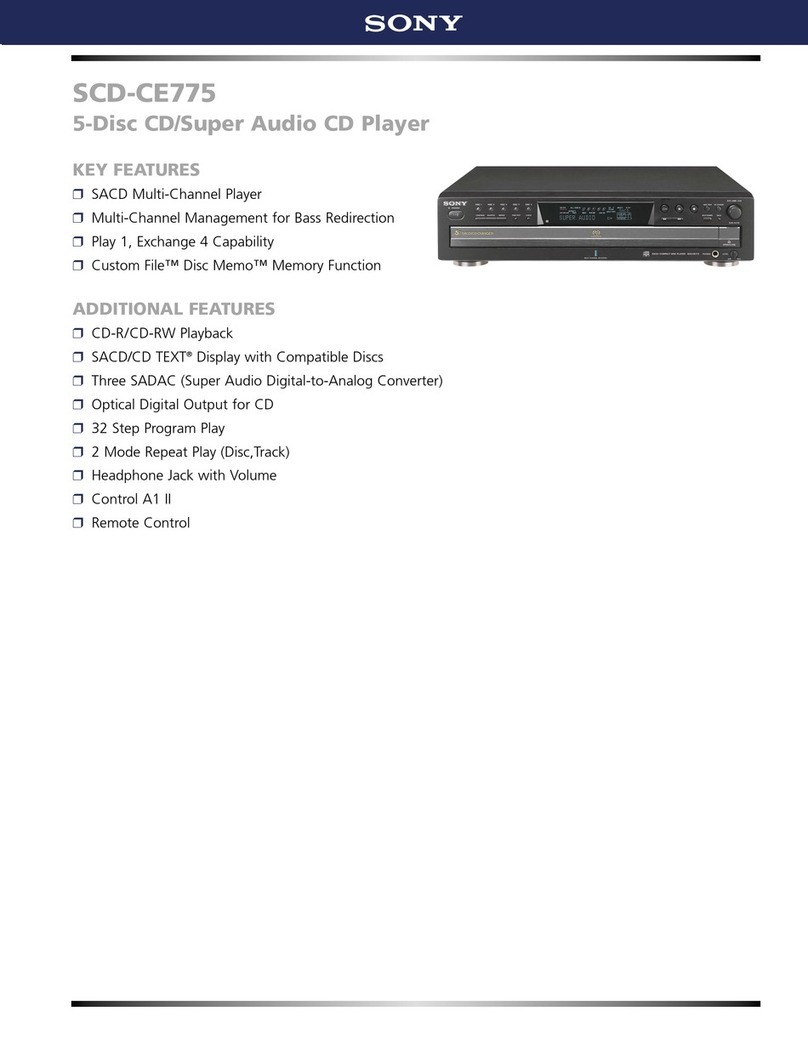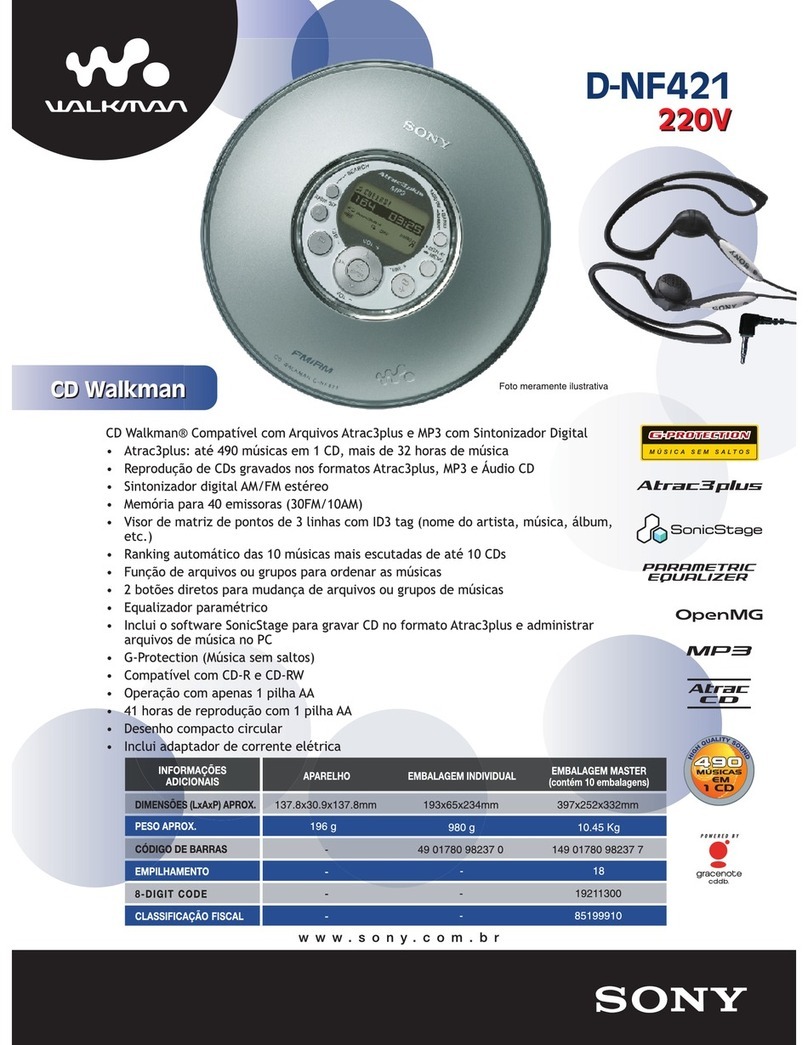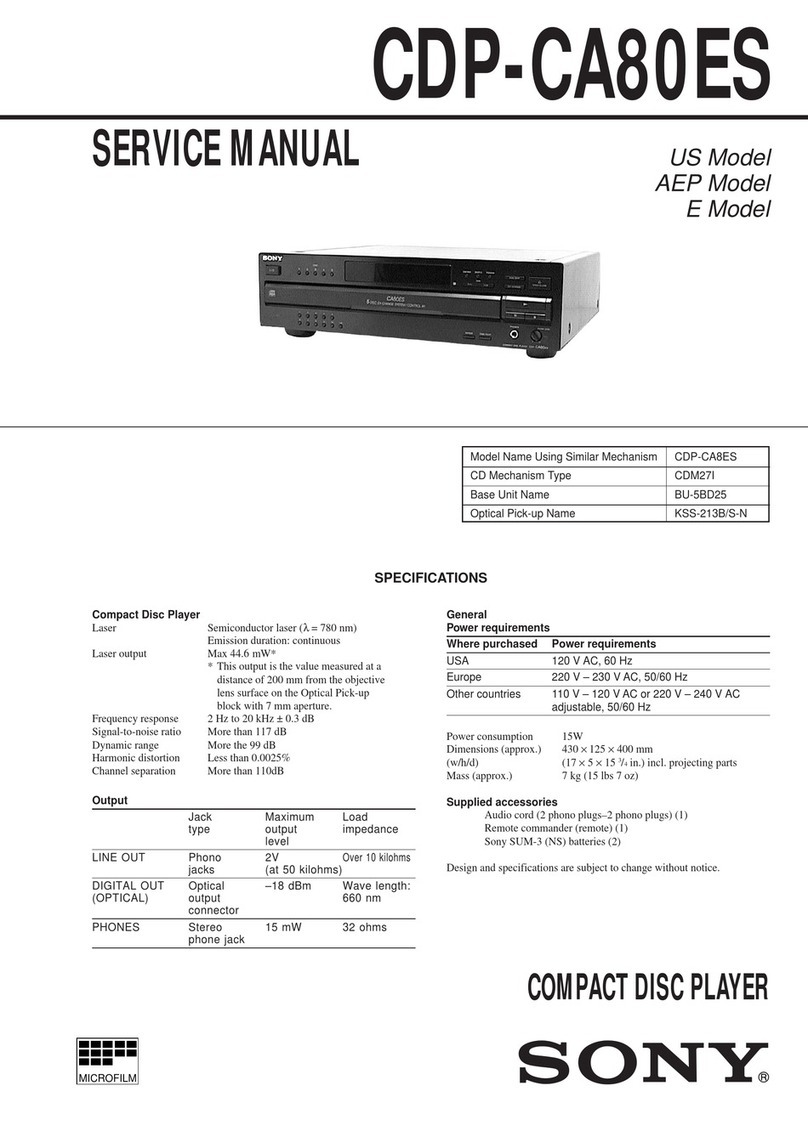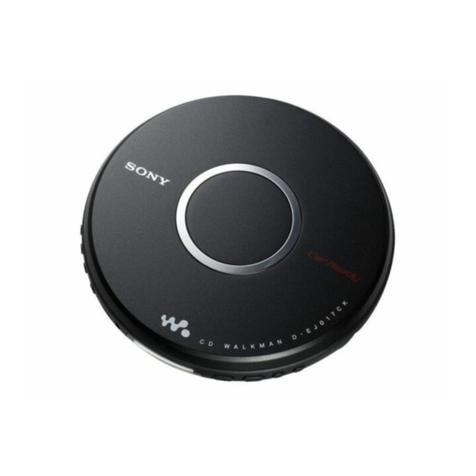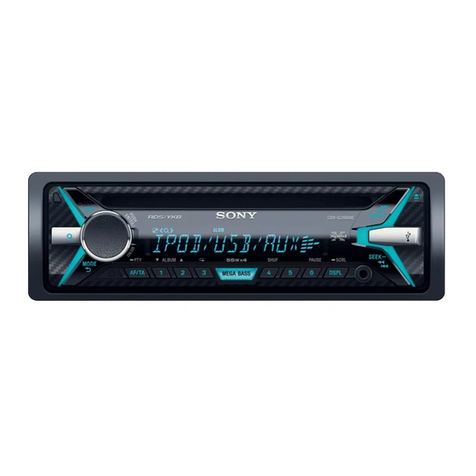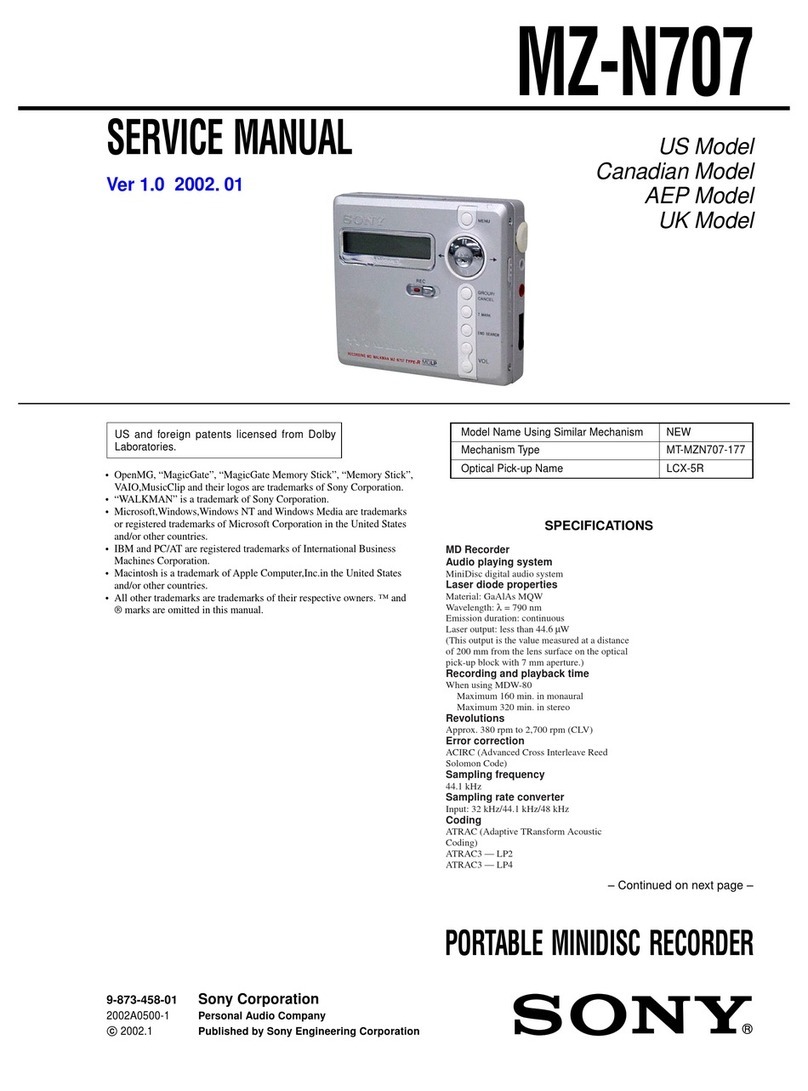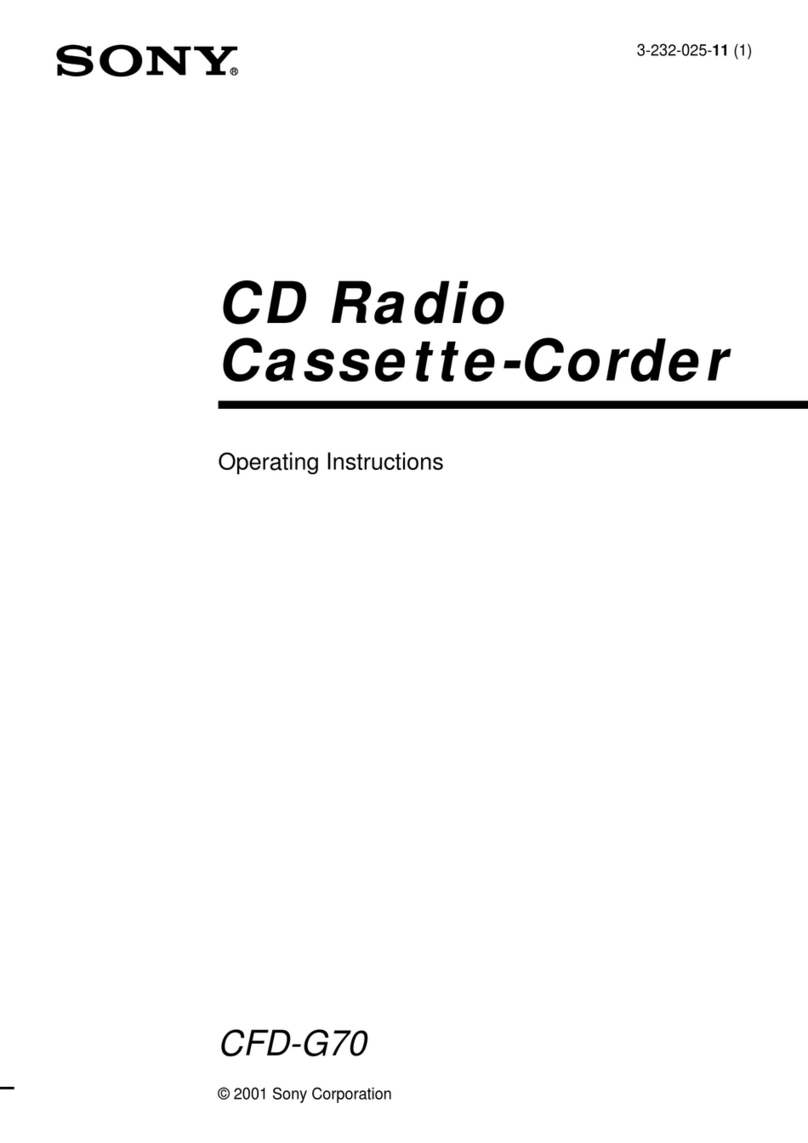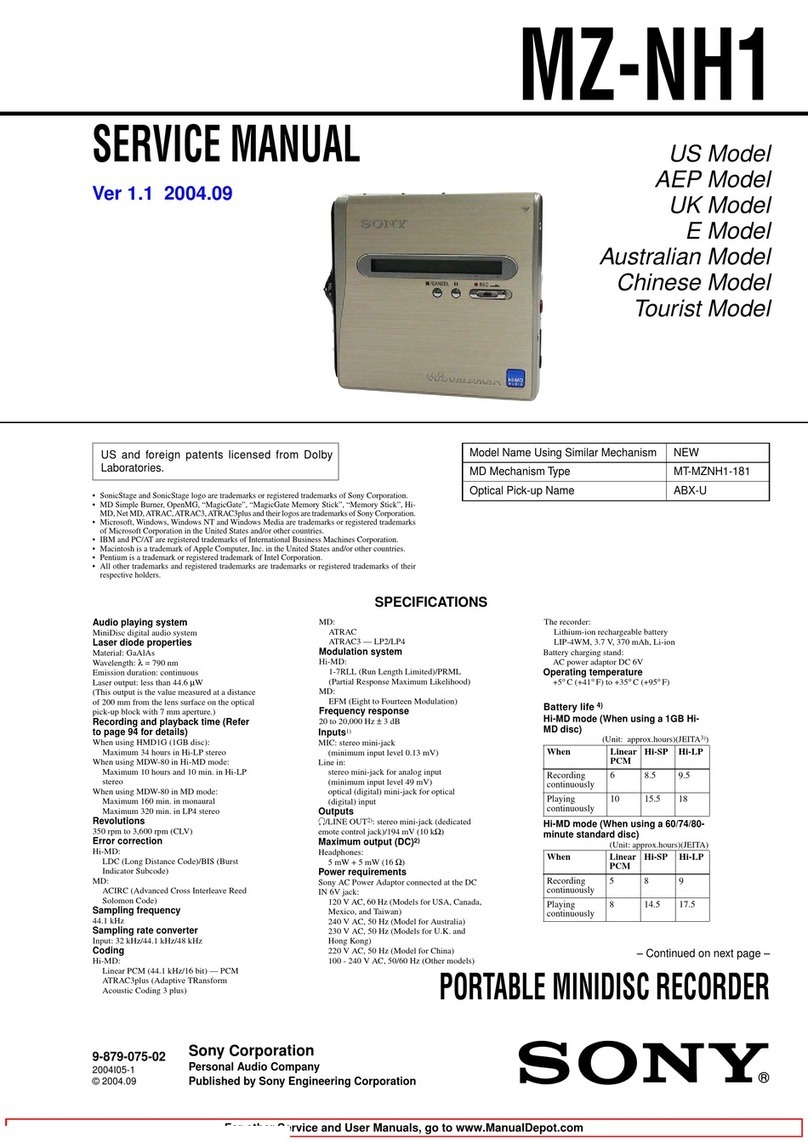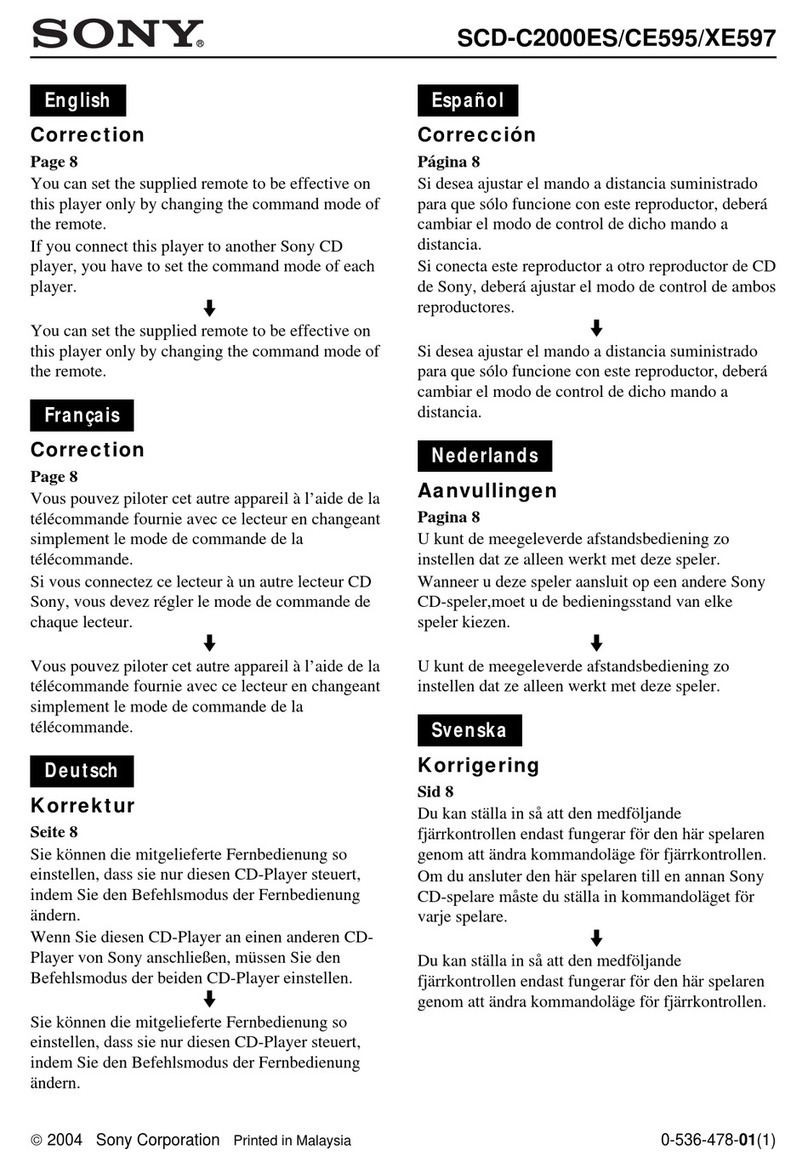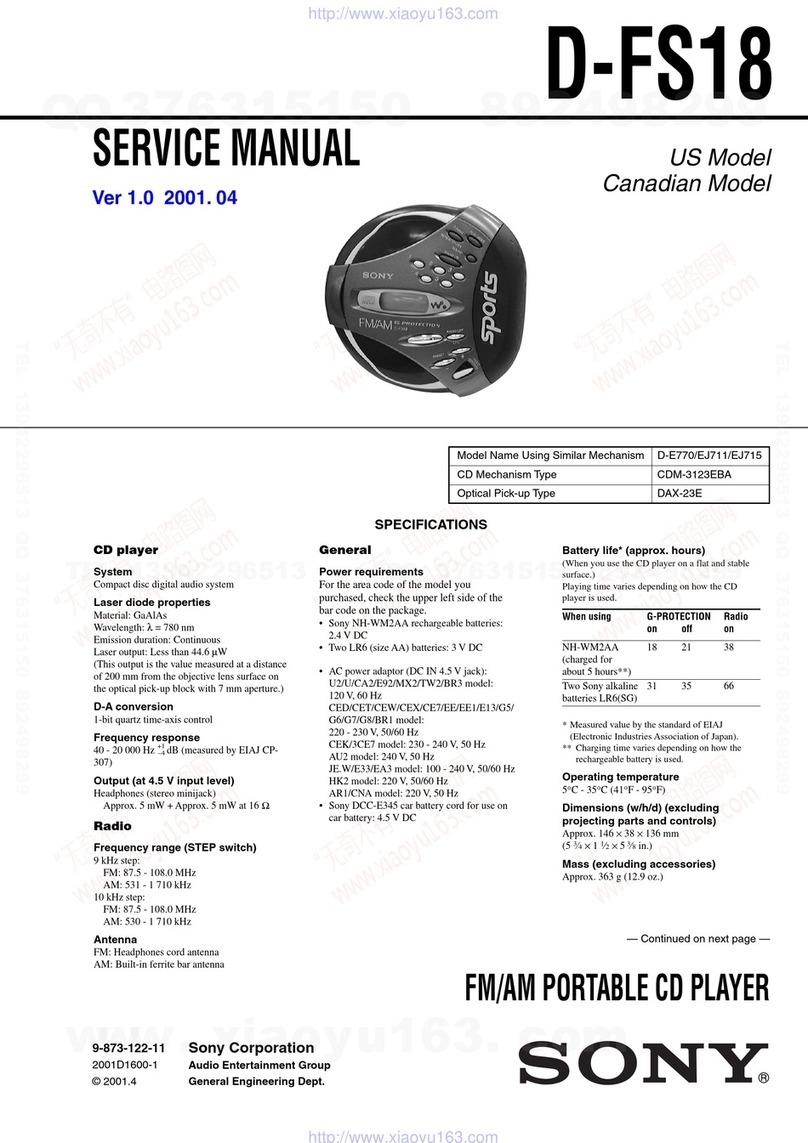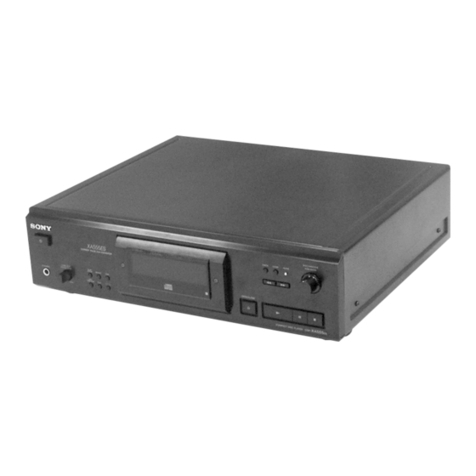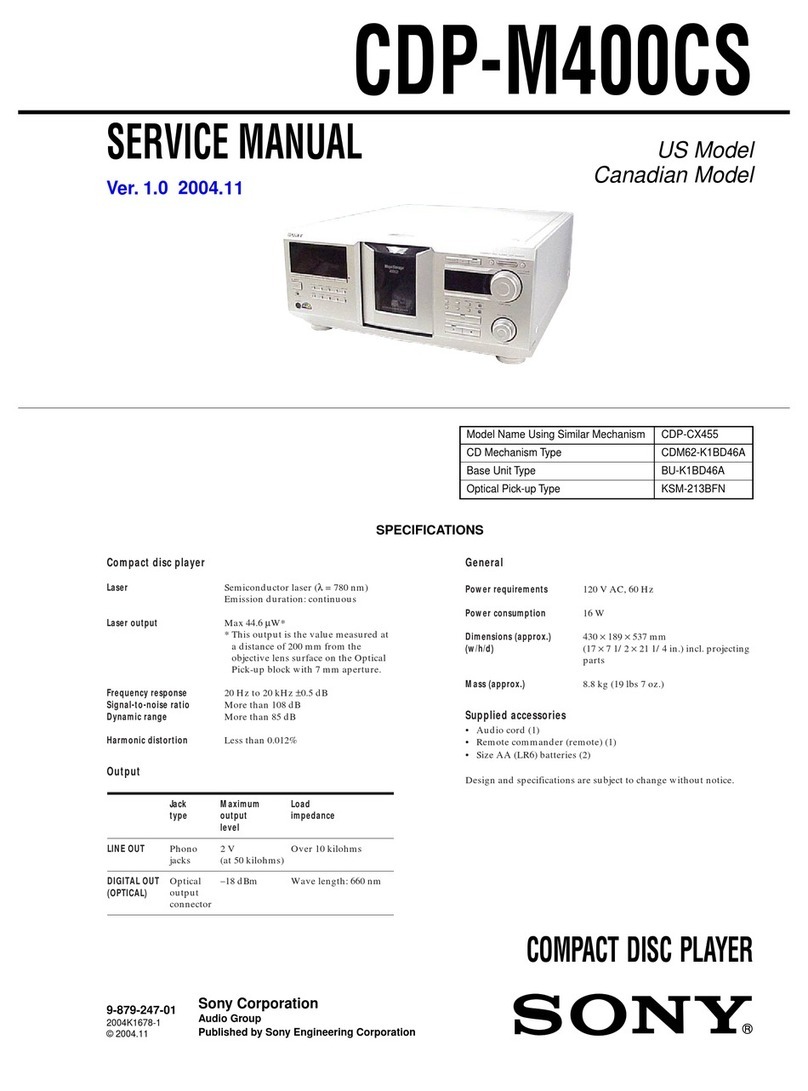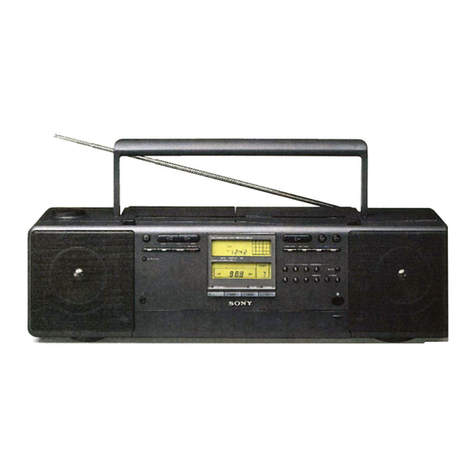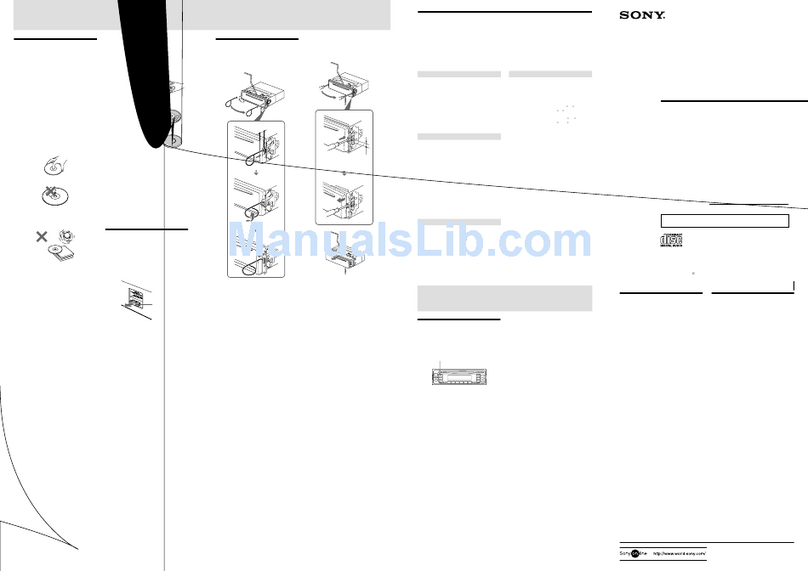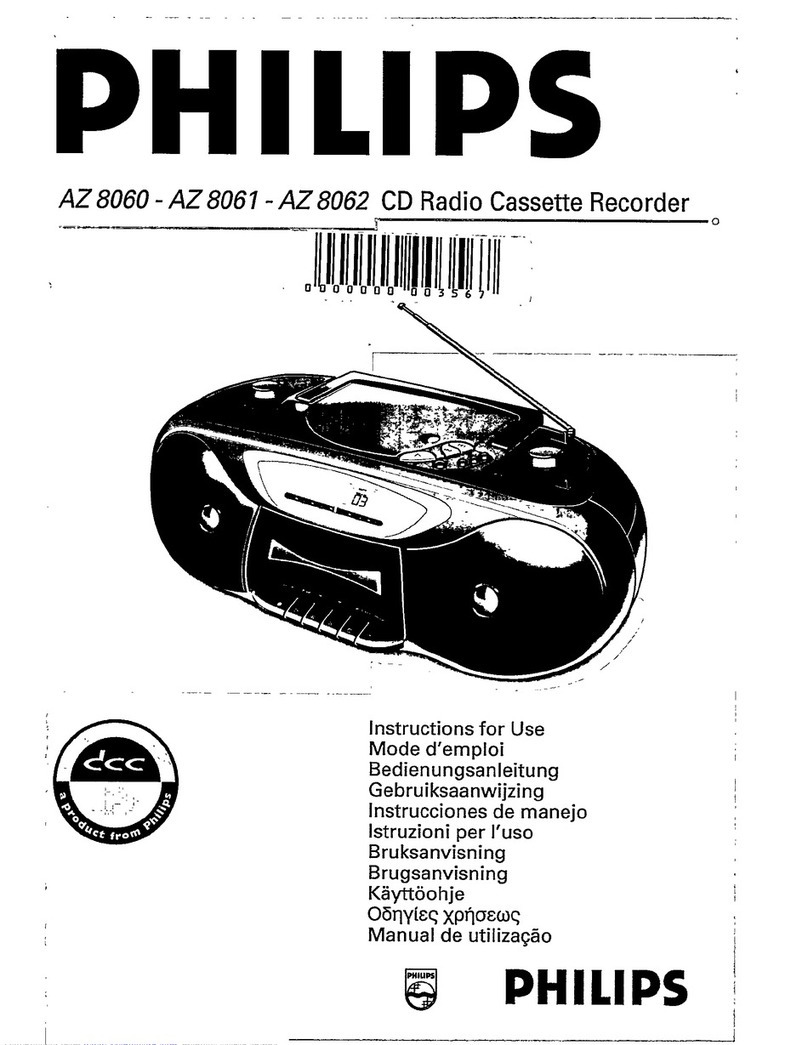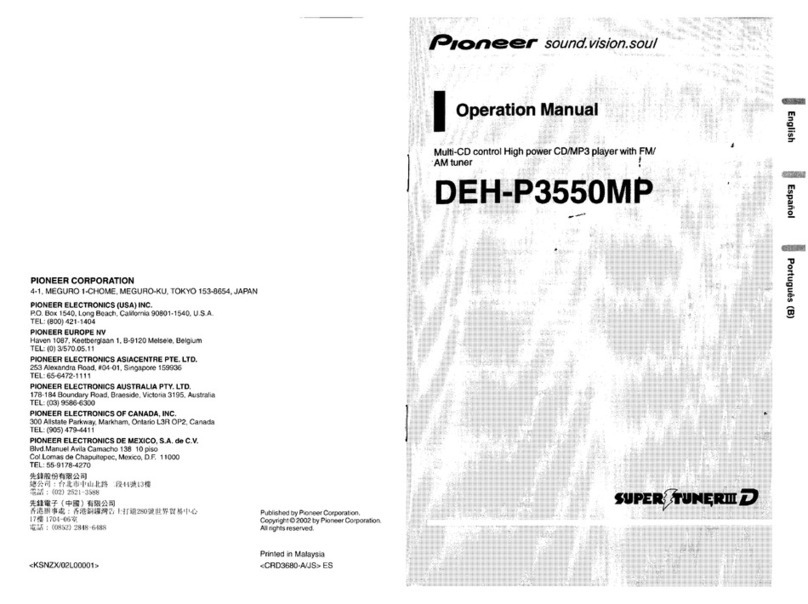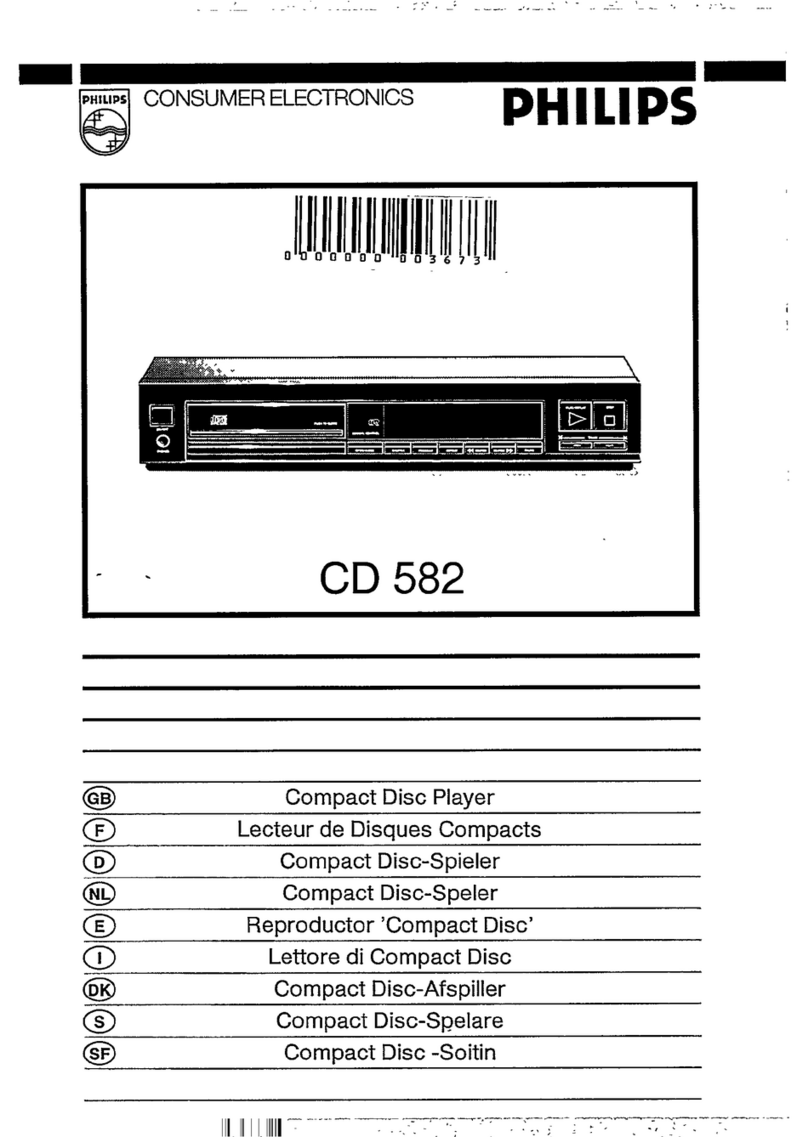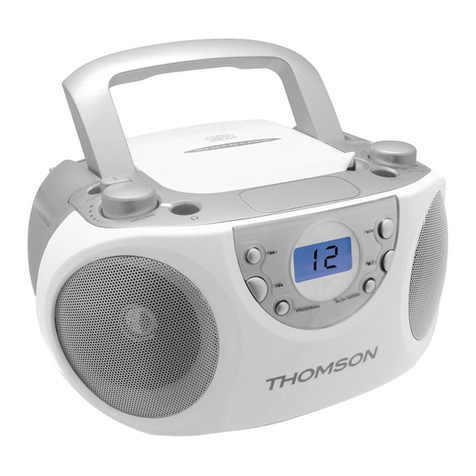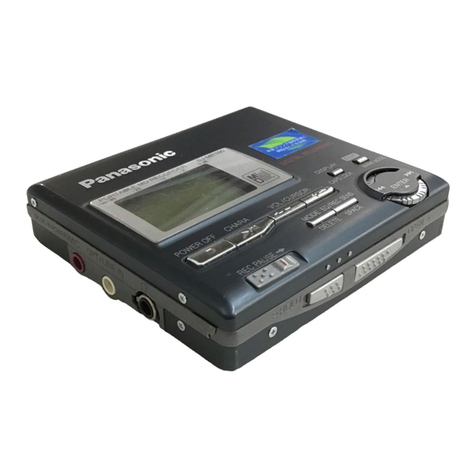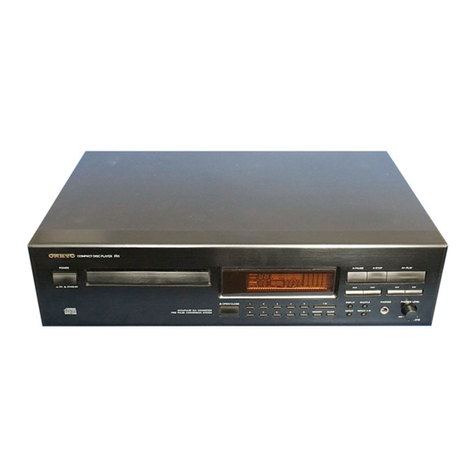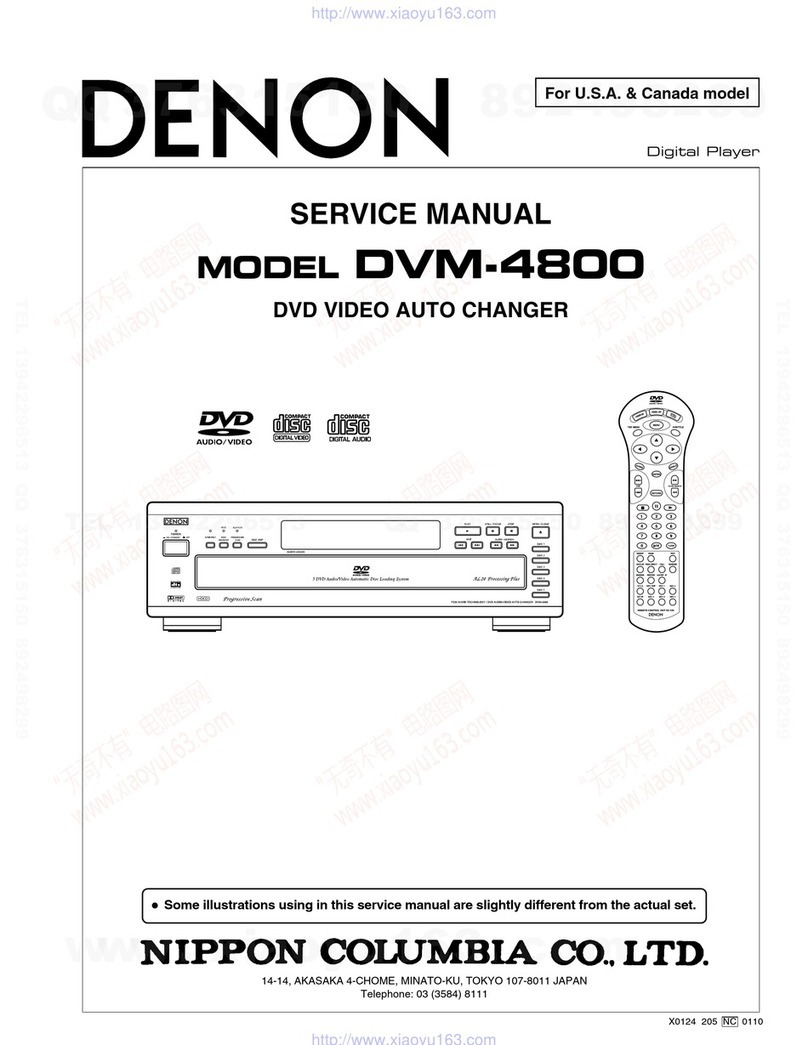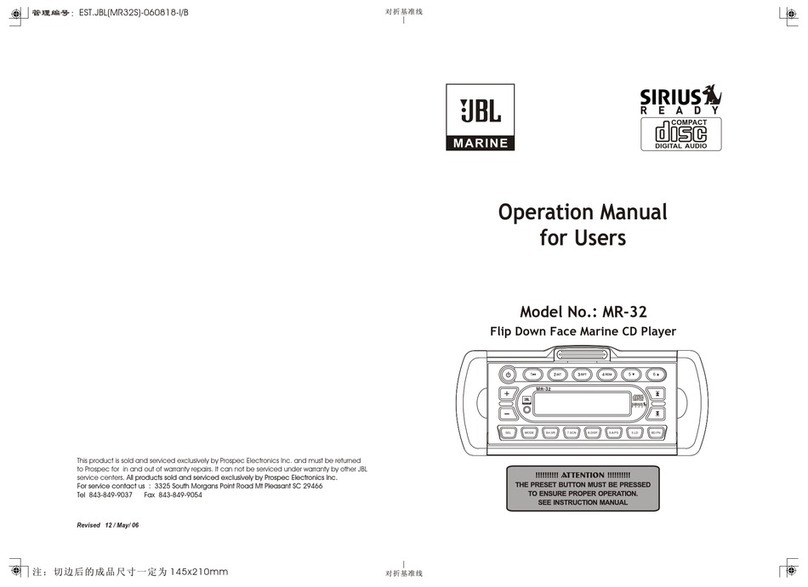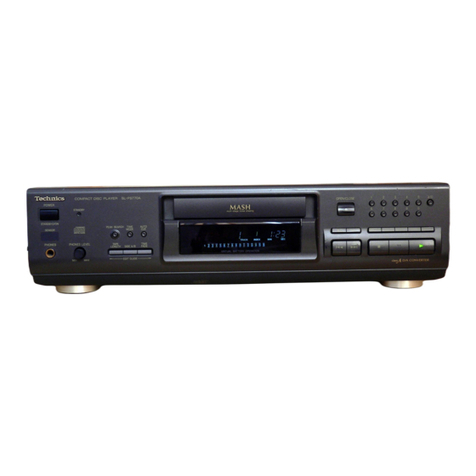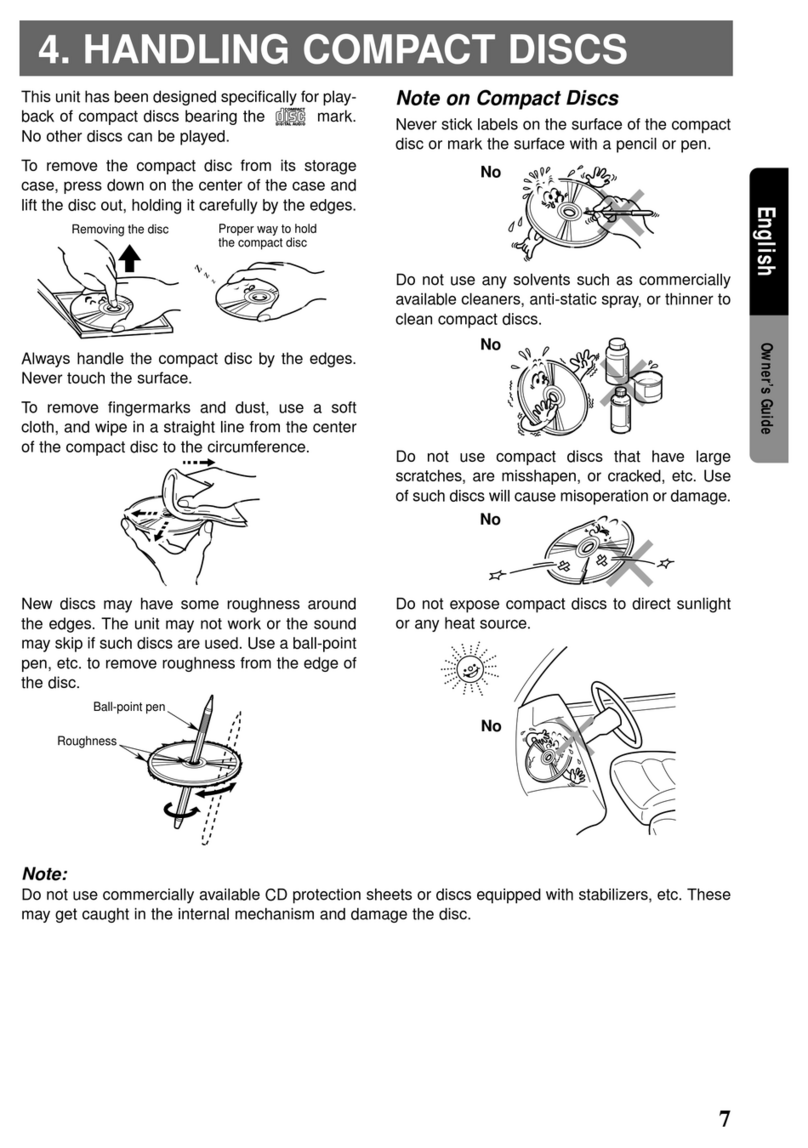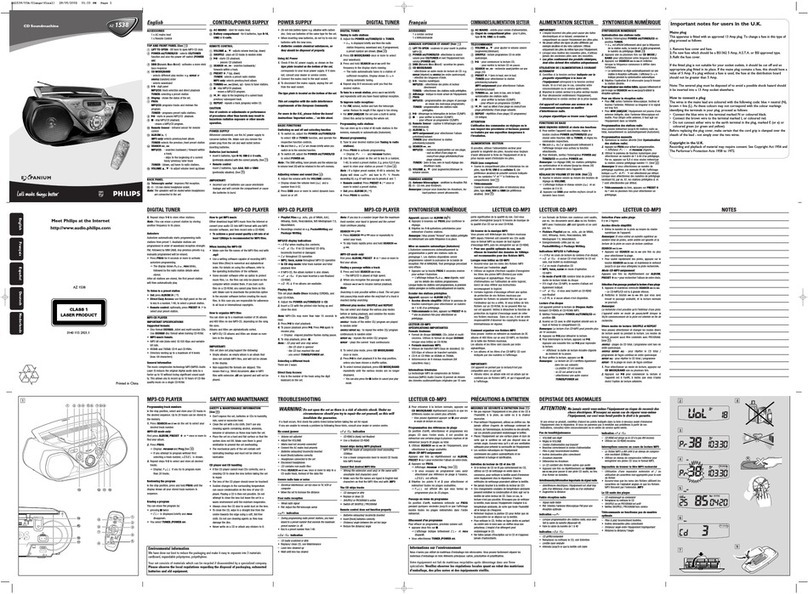
TABLE
OF
CONTENTS
Section
Title
Hage.
Specifications
2...
sc.
Sen
bb
oe
bore
See
ees
1
Features:
(coc
eects
Fetes
aL
Se
LOG
eee
ho
2
Operating
Voltage
..........
0...
0.00022
eee
2
Safety
Check-out
....
0...
0.2...
0.0.00
ee
eae
3
Model
Identification
..............2.000008-
3
SECTION
1.
GENERAL
Protection
of
Eyes
from
Laser
Beam
During
SERVICING:
34
58S.
D
tye
ale
Bisinae!
oy
Raat
aeetae
eee
4
Location
and
Function
of
Controls
............
5
Servicing
Note
....
0.0.0.2...
eee
ee
ee
ee
6
SECTION
2.
ADJUSTMENTS
.............--
7
SECTION
3.
DIAGRAMS
3-1.
IC
Block
Diagrams.................-
10
3-2.
Block
Diagram................--055
11
3-3.
Printed
Wiring
Boards
(Display
Section).
.
13
3-4,
Semiconductor
Lead
Layouts
.........
13
3-5.
Schematic
Diagram
(Display
Section)
...
15
3-6.
Waveforms
.........
0.0
cee
eee
ee
eee
19
3-7.
Printed
Wiring
Boards
(Main
Section)
...
20
3-8.
Schematic
Diagram
(Main
Section
1/2)
..
23
3-9.
Schematic
Dlagram
(Main
Section
2/2)
..
26
SECTION
4.
EXPLODED
VIEWS
............
29
SECTION
5.
ELECTRICAL
PARTS
LIST......
34
MODEL
IDENTIFICATION
—
Specification
Label
—
CDP-227ESD
(AEP,
UK
model)
CDP-507ESD
(US,
Canadian,
E
model)
SONY:
won
nGHy
COMPACT
DISC
PLAYER
MMMM
SERIAL
NO.
MADE
IN
JAPAN
CDP-227ESD
AEP,
UK
model:
AC
220—240V
50/60
Hz
CDP-507ESD
US,
Canadian
model:
AC
120V
60Hz
20W
E
model:
AC
110,
120,
220—240V
50/60
Hz
20W
20W
CDP-227ESD/507ESD
CDP-507ESD:
SAFETY
CHECK-OUT
After
correcting
the
original
service
problem,
perform
the
following
safety
check
before
releasing
the
set
to
the
customer:
Check
the
antenna
terminals,
metal
trim,
‘“‘metallized”
knobs,
screws,
and
all
other
exposed
metal
parts
for
AC
leakage.
Check
leakage
as
described
below.
LEAKAGE
TEST
The
AC
leakage
from
any
exposed
metal
part
to
earth
ground
and
from
all
exposed
metal
parts
to
any
exposed
metal
part
having
a
return
to
chassis,
must
not
exceed
0.5
mA
(500
microampers).
Leakage
current
can
be
measured
by
any
one
of
three
methods.
1.
A
commercial
leakage
tester,
such
as
the
Simpson
229
or
RCA
WT-540A.
Follow
the
manufacturers’
instructions
to
use
these
instru-
ments.
2.
A
battery-operated
AC
milliammeter.
The
Data
Precision
245
digital
multimeter
is
suitable
for
this
job.
3.
Measuring
the
voltage
drop
across
a
resistor
by
means
of
a
VOM
or
battery-operated
AC
volt-
meter.
The
“limit’’
indication
is
0.75
V,
so
analog
meters
must
have
an
accurate
low-
voltage
scale.
The
Simpson
250
and
Sanwa
SH-63Trd
are
examples
of
a
passive
VOM
that
is
suitable.
Nearly
all
battery
operated
digital
multimeters
that
have
a
2
V
AC
range
are
suitable.
(See
Fig.
A)
To
Exposed
Metal
Parts
on
Set
|
AC
voltmeter
(0.75
V)
0.15uF
if
S
1,5kQ
=
Earth
Ground
Fig.
A.
Using
an
AC
voltmeter
to
check
AC
leakage.

